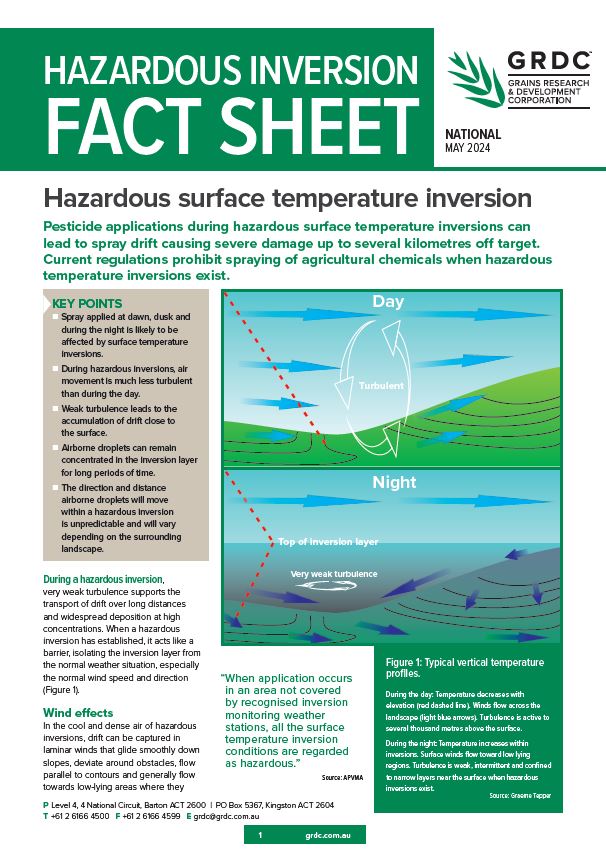Hazardous inversion
Hazardous inversion
Published: 14 May 2024
Growers must not spray pesticide during hazardous surface temperature inversions. These conditions can lead to spray drift. Spray drift in this situation can cause severe damage several kilometres off-target.
Key points
- A surface temperature inversion occurs when the air at ground level is cooler than the air above.
- Pesticides sprayed at dawn, dusk, or night are often affected by these inversions.
- During hazardous inversions, air is less turbulent than it is during the day.
- This weak turbulence causes more pesticide drift near the ground.
- Droplets in the inversion layer can remain concentrated for long periods.
- Their movement during a hazardous inversion is unpredictable.
- Best practice is not to spray when wind speed is below 5 km/h at a height of 2m. Also, avoid spraying when wind direction is inconsistent, day or night.
Want a hard copy?
GRDC produces a range of publications to share the RD&E knowledge generated from our investments with grain growers and the broader industry.
Printed publications
Printed copies of some publications are available for growers, advisers and farming systems groups, for personal use and distribution at GRDC events.
Contact GroundCover Direct on 1800 11 00 44 or email ground-cover-direct@canprint.com.au to request copies. Publications are free but postage and handling costs may apply.
Download PDF
Region: National
GRDC Project Code: MRE2111-001SAX,

